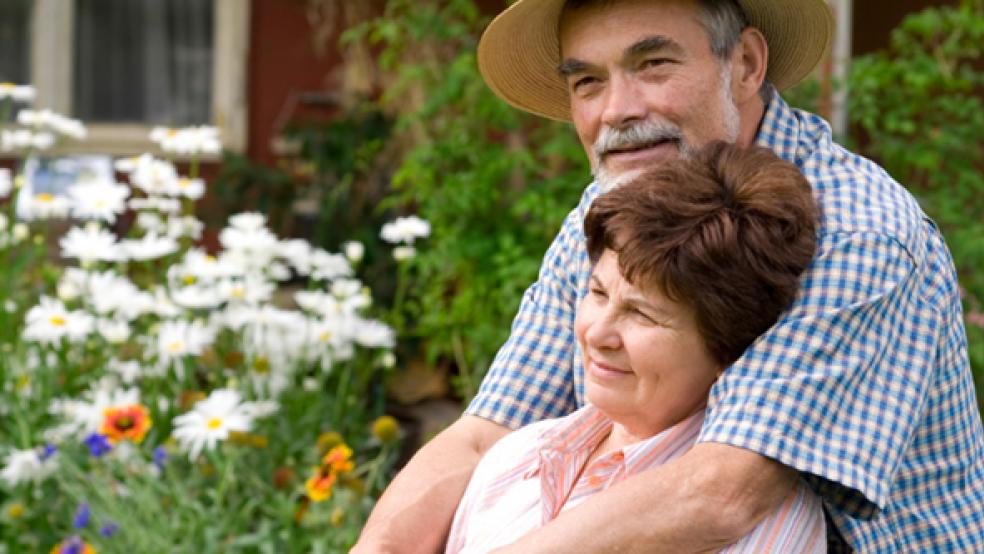Welcome to 21st century America, where we have longer lives than ever before and higher hopes for healthy aging. We are, happily, the beneficiaries of medical and scientific breakthroughs that have given us life spans that not long ago would have been the stuff of science fiction. But we also face serious challenges, including the number of seniors struggling to find and afford much-needed care.
Enter a bipartisan legislative effort, no doubt inspired by the unique needs of older Americans. Sen. Joni Ernst (R-IA) and Rep. Tom Reed (R-NY), in a civilized, cross-party collaboration, have introduced the Credit for Caring Act 2016 (Senate version here; House version here) which would create a tax credit for long-term family caregivers.
This credit would take a huge burden off the backs of tens of millions of family caregivers, who suffer from high rates of depression and declining physical health.
Related: It's Time to Add Alzheimer’s to the List of Global Pandemics
The legislative effort comes alongside a new report from the Home Care Association of America (HCAOA) and the Global Coalition on Aging (GCOA), Caring for America’s Seniors: The Value of Home Care, which addresses the nations' elder caregiving crisis.
As documented in the report, working family caregivers are 50 percent more likely than their non-caregiver colleagues to experience daily physical pain. They also suffer from subtle but equally intrusive bouts of mental and emotional anguish.
The report highlights the growing importance of formal elder caregiving, needed even more as demographic and cultural changes increase the burdens on family caregivers. As the report states, “The ratio of potential family caregivers to those over 80 will steeply decline from 7:1 today to 4:1 by 2030, and seniors live an average of more than 280 miles from their nearest (adult) child.” Mobility is a feature of modern American life; it’s time to incorporate that fact into a more reality-based elder caregiving model.
The new report describes how home care connects dedicated professionals with aging Americans, helping maintain more active and therefore healthier lifestyles, as well as providing cost-effective daily support for those suffering from multiple chronic diseases. Leading elder care issues -- including Alzheimer’s, non-communicable diseases, the deterioration of skin, bone, and muscle mass, and aging’s oral and vision conditions -- all can be efficiently attended to through home care.
The elder caregiving story on Capitol Hill also reveals insights about the best of American innovation. In the process of improving lives, home care is creating U.S. jobs while exporting this quality care model across the planet. This shatters the myth that innovation is somehow the domain of tech startups and billion-dollar unicorns. The home care sector is developing new solutions and shaking up outdated approaches, even if the innovation is low-tech or no-tech. For example, Home Instead Senior Care, hardly an Apple or a Google, has just won Queen Elizabeth’s Award for Innovation because they’re changing the way we provide care to those who need it.
Related: The American Retirement Crisis in 5 Charts
By disrupting costly and sometimes callous institutional care, home care is generating economic benefits for all of society. Elderly Americans receiving home care generally need fewer trips to the doctor and are admitted to hospitals at a lower rate. As the HCAOA reported, in 2008 alone home cares services saved the United States $25 billion in hospital costs. No doubt we will find that number and others like exploding in future years.
Over the next decade, home care jobs will be a major economic driver, increasing at a rate four times the cross-sector average to reach 2.3 million by 2024. Seniors and their families will largely pay for this growth, rather than government funding. Perhaps the biggest innovative disruption is that this industry allows seniors to age where nine out of ten want to – at home. As HCAOA president and Senior Helpers CEO Peter Ross said, "Home care enables people to remain in their homes for as long as possible, exactly where they want to be."
On the employment side, the innovative home care industry is changing who works and how. The report provides a voice to often-overlooked family and professional caregivers, ranging in age from 26 to 92.
Take Mary Hartsock a caregiver for Right at Home In-Home Care & Assistance who chose a second (or was it a third?) career in home care. She continues to work in the field into her 90s. Or 26 year-old Patty Meadows of Homewatch CareGivers International who switched to home care from an institutional setting, citing a sense of connection with her home care clients. The report also spotlights Lynn Wright, who says that her mother's aide, Tracey Read of BAYADA Home Health Care became more like a family member than an employee.
These are the faces of the home care revolution. The compassionate, enterprising individuals on the frontlines of the longevity and aging mega-trend. At a time of great need they are the innovators literally creating a new market, one that reflects the best values of the society we want for our children and grandchildren. They are re-writing the rules for how we provide elder care, launching a new industry and improving lives across the nation and around the world.





